
Question and Answers Forum
Question Number 36270 by ajfour last updated on 30/May/18
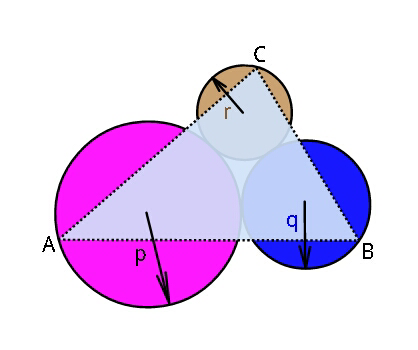
Commented by ajfour last updated on 30/May/18
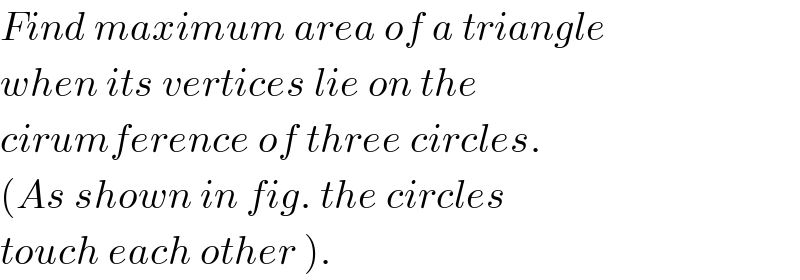
Commented by tanmay.chaudhury50@gmail.com last updated on 31/May/18

Commented by MJS last updated on 31/May/18

Commented by ajfour last updated on 31/May/18
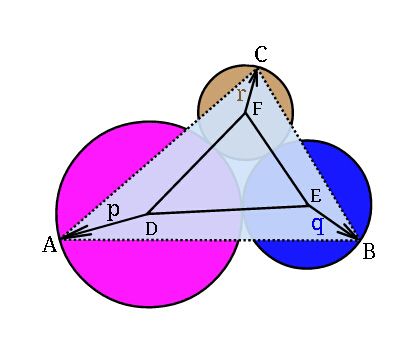
Commented by ajfour last updated on 31/May/18

Commented by ajfour last updated on 31/May/18
![let DE be x-axis with D as origin. let ∠FDE =α A≡(x_1 ,y_1 ) , B≡(x_2 ,y_2 ) , C≡(x_3 ,y_3 ) x_1 ^2 +y_1 ^2 =p^2 (x_2 −p−q)^2 +y_2 ^2 =q^2 [x_3 −(p+r)cos α]^2 +[y_3 −(p+r)sin α]=r^2 △=(1/2) determinant ((x_1 ,y_1 ,1),(x_2 ,y_2 ,1),(x_3 ,y_3 ,1)) with (∂△/∂x_1 ) =0 , (∂△/∂x_2 ) =0 , (∂△/∂x_3 ) =0 ⇒ determinant ((1,(−(x_1 /y_1 )),1),(x_2 ,y_2 ,1),(x_3 ,y_3 ,1))=0 ⇒ (y_2 −y_3 )+(x_1 /y_1 )(x_2 −x_3 )+(x_2 y_3 −x_3 y_2 )=0 similarly two more equations for (∂△/∂x_2 ) =0 , (∂△/∂x_3 ) =0 . using these six equations we find (x_i , y_i ) and thus △_(max) .](Q36325.png)
Commented by MrW3 last updated on 11/Jun/18
Great!
Commented by MrW3 last updated on 12/Jun/18
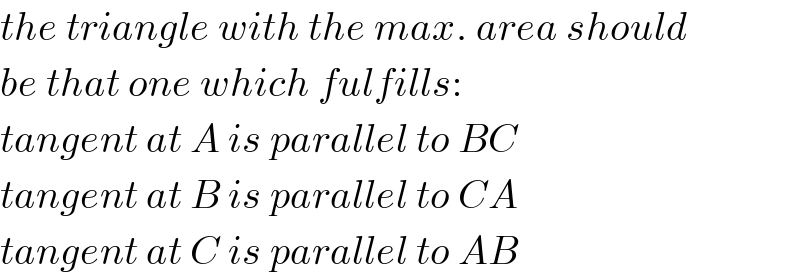
Answered by MJS last updated on 02/Jun/18
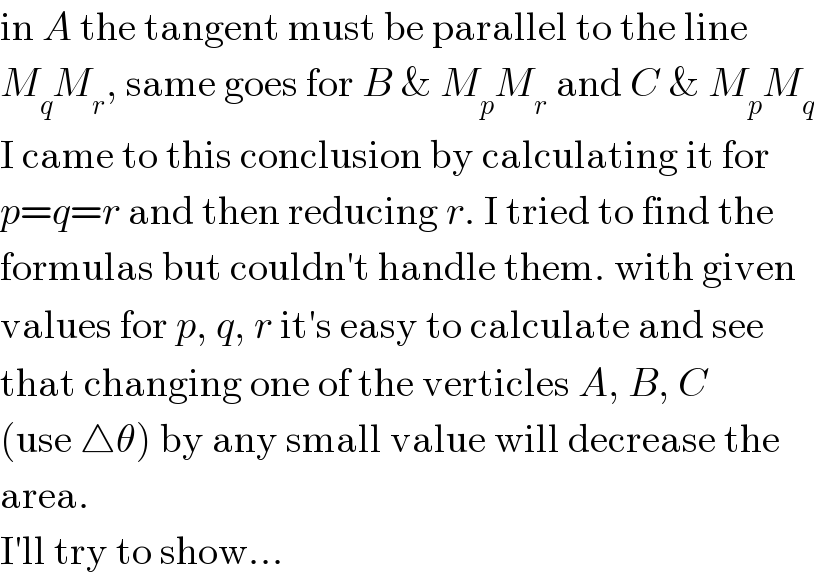
Commented by MrW3 last updated on 12/Jun/18

